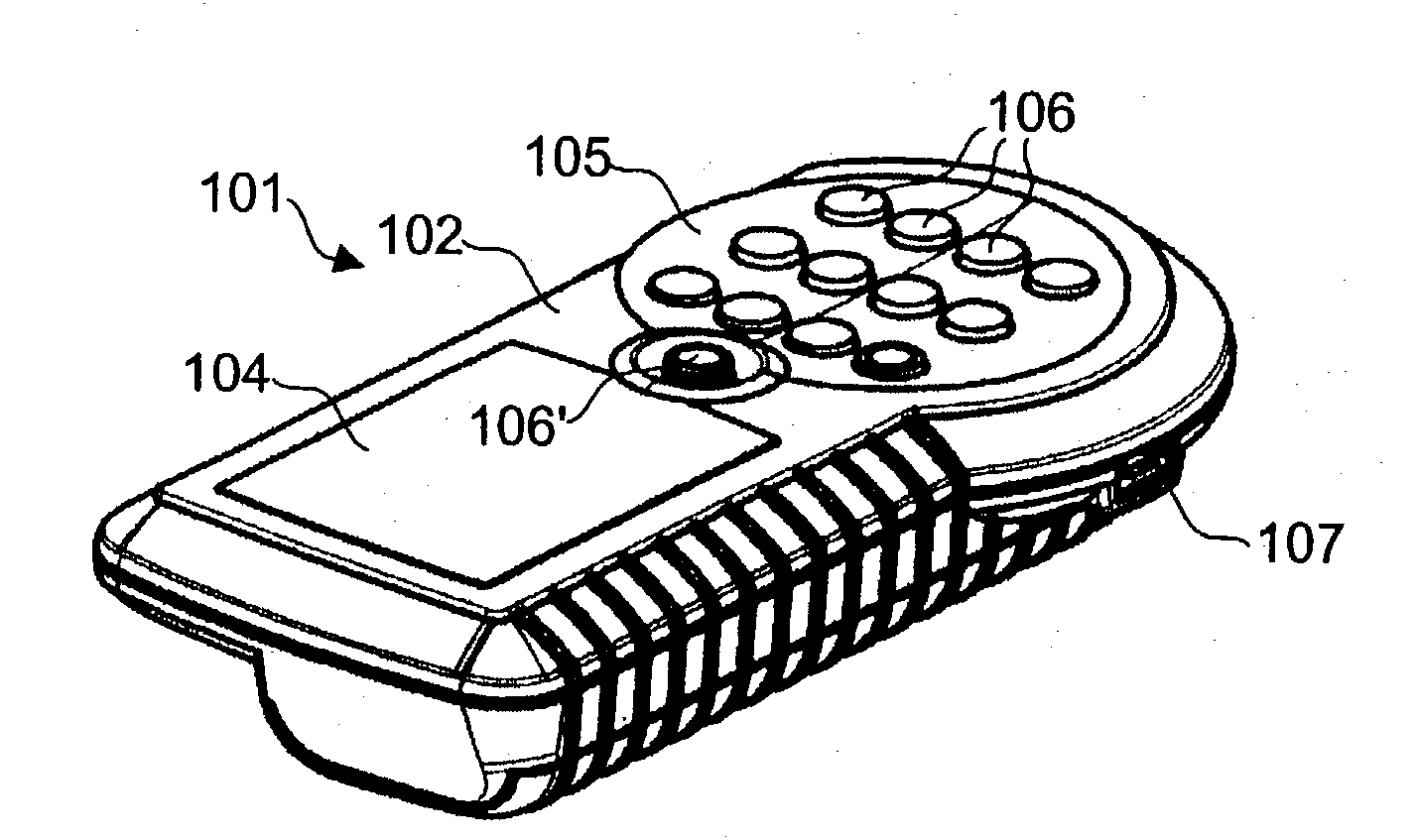Portable communication apparatus and methods for match-making with distributed memory
a communication apparatus and memory technology, applied in the field of electronic matchmaking, can solve the problems of not being able to match two people at the same time, taking considerable time for two people to realize that they do not, and being difficult to find the right partner
- Summary
- Abstract
- Description
- Claims
- Application Information
AI Technical Summary
Problems solved by technology
Method used
Image
Examples
Embodiment Construction
[0073] Initially, an overview of the functional features of the portable communication apparatus according to one embodiment of the present invention will be given with reference to FIGS. 1a-c and 2a-2f. Then, a detailed description of the structural features will follow with reference to the remaining figures.
[0074] FIGS. 1a-1c show a portable communication apparatus 101 according to one embodiment. The portable communication apparatus 101 is a wireless match-making device, assisting a user of the portable communication apparatus in meeting other people, each equipped with a respective portable communication apparatus of the same, or similar, type as apparatus 101.
[0075] An ideal use scenario is illustrated in FIG. 2a. A plurality of users 202, 204, 206, 208 are provided with portable communication apparatuses 201, 203, 205, 207, each of which is essentially identical to the apparatus 101 of FIGS. 1a-1c. For reasons of simplicity, though, the apparatus 101 will be represented by th...
PUM
 Login to View More
Login to View More Abstract
Description
Claims
Application Information
 Login to View More
Login to View More - R&D
- Intellectual Property
- Life Sciences
- Materials
- Tech Scout
- Unparalleled Data Quality
- Higher Quality Content
- 60% Fewer Hallucinations
Browse by: Latest US Patents, China's latest patents, Technical Efficacy Thesaurus, Application Domain, Technology Topic, Popular Technical Reports.
© 2025 PatSnap. All rights reserved.Legal|Privacy policy|Modern Slavery Act Transparency Statement|Sitemap|About US| Contact US: help@patsnap.com



